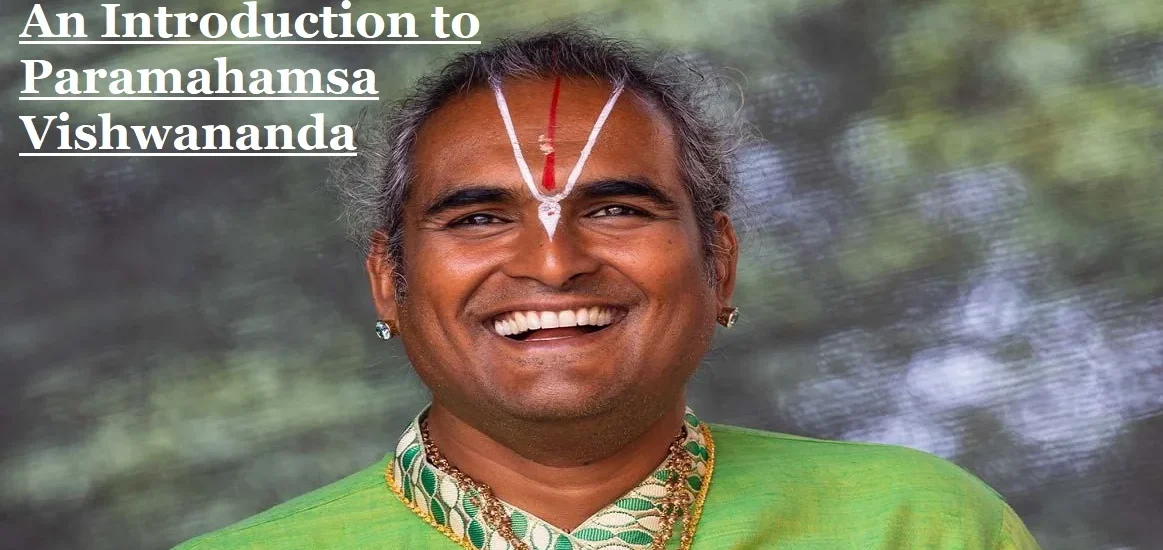Paramahamsa, an enlightened non-secular guru from Mauritius, is famous for his teachings, information, and divine presence, which have touched the lives of tens of hundreds and lots of human beings internationally. His training presents profound insights and sensible strategies for non-secular seekers searching to deepen their connection with the divine and accelerate their experience towards self-realization. In this text, we can discover how people can efficiently employ the lessons and presence of Paramahamsa for their spiritual growth.
Teachings of Paramahamsa Vishwananda
Central to Paramahamsa Vishwananda‘s teachings is the precept of affection, devotion, and capitulation to the divine. He emphasizes the significance of cultivating a loving relationship with the Divine, often referred to as Bhakti, as a path closer to non-secular transformation and liberation. Through bhakti practices, which consist of chanting the names of the Divine, devotional making a track (kirtan), and prayer, mother and father can purify their hearts, quiet their minds, and wake up their innate reference to the divine presence internally and round them.
Paramahamsa, furthermore, teaches the importance of selfless carrier (seva) as a means of expressing love and devotion to the Divine. Humans can accelerate their non-secular growth and evolution by transcending their egoic obstacles and experiencing the pleasure of selfless giving by serving others with empathy, generosity, and humility.
Realistic Methods for Spiritual Development
More than a few practical methods and non-secular practices that people can incorporate into their daily lives to strengthen and quicken their religious connection are provided by Paramahamsa.
These Strategies Can Also Consist Of:
Daily Sadhana:
Establishing a day-by-day spiritual exercise, or sadhana, is vital for a non-secular boom. This may additionally embody meditation, chanting, prayer, or devotional practices along with puja or arati. Consistency and sincerity in sadhana are key to experiencing the transformative strength of those practices.
Satsang and Study:
Attending satsangs (religious gatherings) and analyzing sacred texts, scriptures, and teachings of enlightened masters can furnish beneficial training and thought on the non-secular path. Paramahamsa habitually underlines the significance of Satsang because of the capacity to get hold of gifts, steerage, and non-mainstream sustenance from the master and individual searchers.
Bhakti Yoga:
Bhakti yoga, the course of fondness and commitment, lies at the coronary heart of Paramahamsa Vishwananda‘s lessons. Participating in reflection works comprising reciting the names of the Heavenly, singing bhajans (reflection melodies), and partaking in kirtan directions can awaken the coronary heart’s normal tendency towards adoration and dedication, prompting significant strict stories and inner change.
Seva (selfless service):
Engaging in the selfless carrier, or seva, is another effective exercise advocated with the aid of Paramahamsa. By serving others with love, compassion, and humility, individuals can transcend their ego and cultivate characteristics inclusive of kindness, generosity, and empathy, thereby purifying their hearts and drawing them closer to the Divine.
Guru Bhakti (Devotion to the Guru):
Cultivating a deep and heartfelt devotion to the Guru is considered imperative in lots of non-secular traditions, which include the ones taught through Paramahamsa. Guru bhakti entails surrendering to the schooling and grace of the guru, trusting in their knowledge, and following their teachings with consideration and humility. Through sincere guru bhakti, humans can gain the guru’s benefits and charm, leading to a profound spiritual boom and awakening.
Deepening the connection with Paramahamsa Vishwananda
Deepening one’s reference to Paramahamsa requires sincerity, devotion, and a proper choice for non-secular growth.
Here Are A Few Practices And Attitudes That Could Assist Ladies And Gentlemen In Deepening Their Reference To The Guru:
Sincere Intention:
Approach the guru with a sincere purpose and an open coronary heart, equipped to gain guidance, advantages, and charm.
Regular Communication:
Maintain everyday conversation with the guru via prayer, meditation, and inner communion. Develop an encounter of presence and association with the master for your everyday way of life.
Study and Thought:
Concentrate on the illustrations and messages of Paramahamsa and think about their more profound implications and suggestions for your life. Apply those teachings to your ordinary life and non-secular practice.
Attend Satsangs and Retreats:
Whenever feasible, attend Satsang, retreats, and one-of-a-kind non-secular gatherings led by way of Paramahamsa Vishwananda. These events provide possibilities for direct interplay with the guru and immersion in his divine presence.
Service and Seva:
Engage in selfless carrier (seva) as an approach to expressing your love and devotion to the guru. Offer your time, abilities, and assets as a provider for the guru’s assignment and the welfare of humanity.
Trust and Give Up:
domesticate perception and lay down to the guru’s preparation and charm. Trust that the guru is aware of what’s remarkable about your non-secular evolution and the capitulation of your egoic wishes and attachments at his feet.
Gratitude and Reverence:
Cultivate a mindset of gratitude and reverence within the direction of Paramahamsa for the benefits, teachings, and beauty he bestows upon you. Express gratitude through prayer, offerings, and acts of devotion.
Conclusion
In conclusion, Paramahamsa Vishwananda gives a wealth of teachings, practices, and training for oldsters searching for religious boom and awakening. By embracing his teachings, incorporating realistic strategies into their day-to-day lives, and deepening their connection with the guru, women and men can speed up their spiritual evolution and experience profound transformation in the course of self-realization and divine love.









